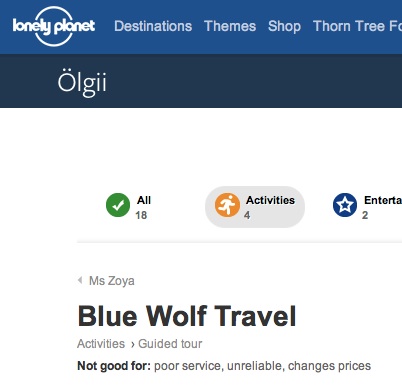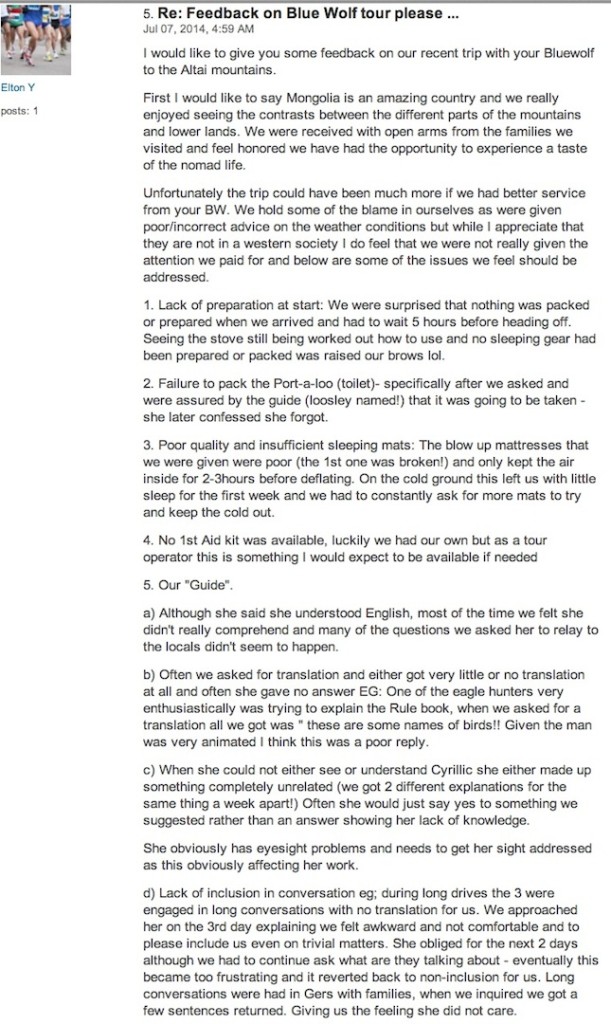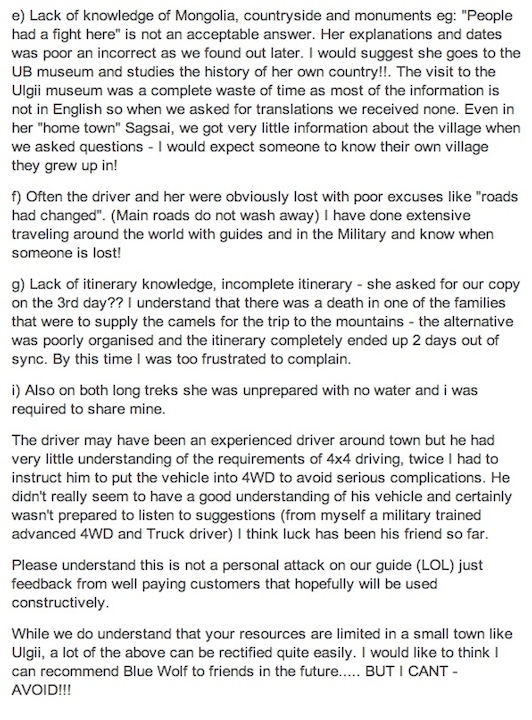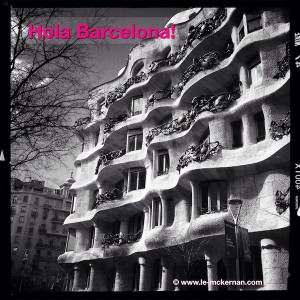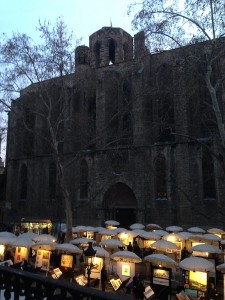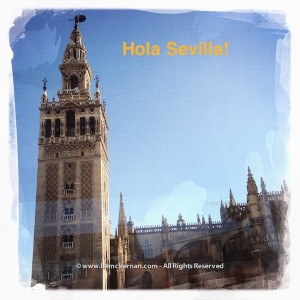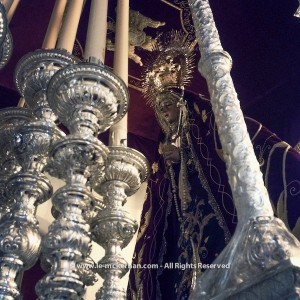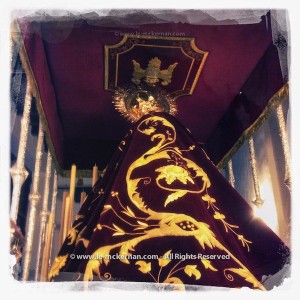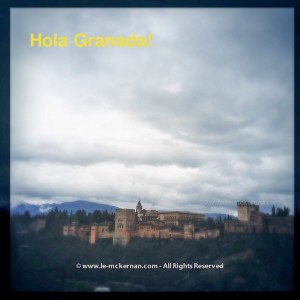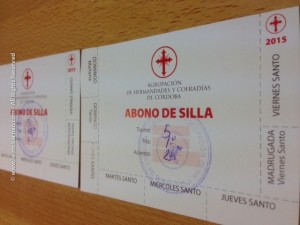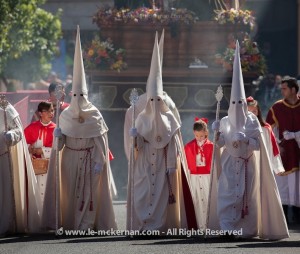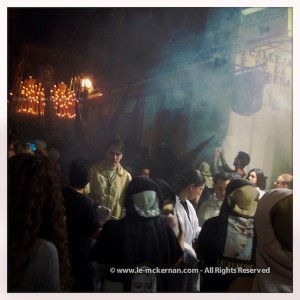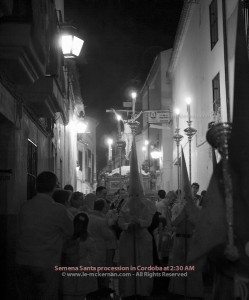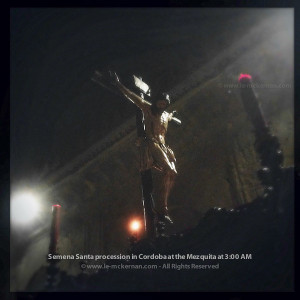OP-ED: Travelling with Wild Frontiers (UK) – a terrible experience!
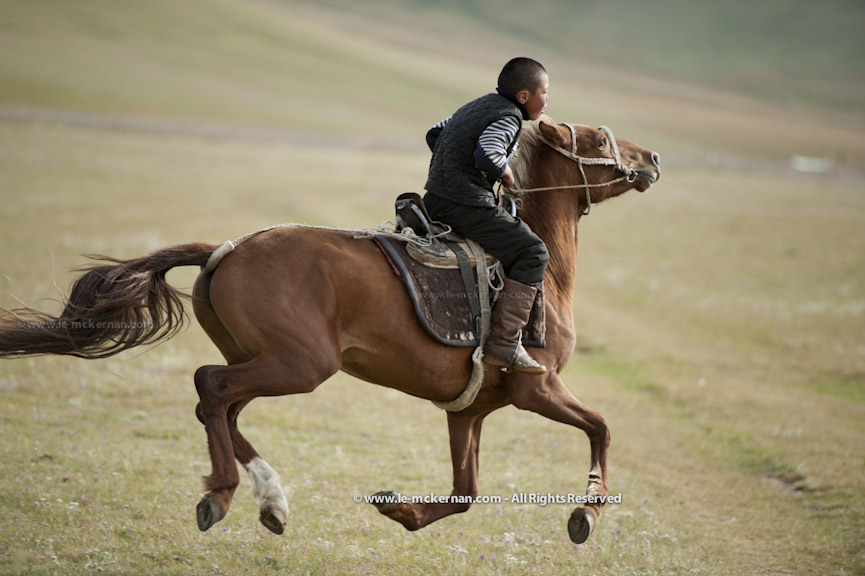
The feedback on this page pertains to Wild Frontiers Adventure Travel Ltd, www.wildfrontiers.co.uk and wildfrontierstravel.com only (and not to www.wildfrontiers.com which is a separate travel company specialising in safaris).
Please note that this is not an “I hate Wild Frontiers” rant. Rather, the purpose of this blog is to help people make an informed decision about whether or not they should travel with WF UK (** see notice below). This blog provides a summary of my experience with WF UK and I hope that it provides an alternative opinion to help counterbalance the gushy testimonials on WF UK’s site and marketing materials.
First, the basics: my husband and I travelled to Central Asia in August 2010 with Wild Frontiers UK as part of their “Silk Road Odyssey” tour covering Kyrgyzstan, Kashgar (China), Tajikistan and Uzbekistan. Although there were many other travel companies offering similar itineraries and were significantly cheaper, we elected to travel with WF based on: WF’s expert knowledge of the region; deep local contacts; ability to deliver “a truly authentic, off-the-beaten-track experience”; their “no hidden costs” promise; and the positive client testimonials. Given that this trip involves multiple border crossings (and hence, the logistics would be exceptionally daunting), the remoteness of some of destinations, and the rich history of the places we would be visiting, we thought that their expertise justified the premium. We were wrong.
Based on my 2010 Silk Road Odyssey experience and in my opinion, most travellers would do just as well armed with a copy of the Lonely Planet. Not only would this save travellers serious money but I daresay that they would have a more authentic and more satisfying experience. Whilst my husband and I actually did enjoy our trip to Central Asia, we both felt that this was because the region itself was amazing. In other words, the overwhelming beauty and history of these countries enabled us to compartmentalised the faults, failures and the overall amateur execution of the trip and to not allow these issues to derail our trip.
In the marketing dossiers, there is a page titled “Why Wild Frontiers?”. Allow me to share with you my experience and opinion on “Why NOT Wild Frontiers?”.
1. Not at all authentic
In their marketing materials, it stated “our unique, original itineraries allow our clients to take journeys that venture beneath the surface of the region …. we don’t subcontract our trips … we are able to give a truly authentic, off-the-beaten-track experience.” Furthermore, at the orientation meeting with our tour leader, she’d talked about WF’s ethos as a “travel company for travellers”. She then proclaimed that on this trip, we would be “travellers and not tourists”. But, to be honest, I never felt more like a tourist than I did on this trip! Travellers we were not!
Excluding the time we’d spent at Song Kul Lake and Tash Rabat, the itinerary was neither unique nor original. Based on what I’d observed, the WF tour leader didn’t set the day-to-day plans — the local subcontracted guides did. As such, we basically followed the subcontractor’s itinerary which in essence is the bog-standard itinerary for all tourists. Thus, we kept running into the same tourists from other groups over and over again — at the restaurants, at the sites, and just about everywhere else! The subcontracted guides did more than just set the plans — at times, they were ‘in the lead’ and not our WF tour leader. A particular galling example was in Uzbekistan when our WF leader decided that she wanted a break (to catch up on her travel blogs) and thus abdicated all her responsibilities for the day to the local guide! ( Question: what is the point of hiring WF to provide expert tour leads if they themselves can’t be bothered to lead? )
Upon return from this trip, in my feedback to WF, I’d questioned the use of and the prominent role played by the subcontractors because WF’s marketing materials clearly stated that ‘WF does not subcontract’ out their trips —
WF’s response to my feedback is below. (My feedback is in black font whereas WF’s response is in blue.) I’ll let you decide if the two statements are compatible.
Moving away from the issue of subcontracting, the overall experience was not what I would describe as authentic or off-the-beaten-track. For example, for our first night together with WF in Kyrgyzstan, dinner was at a pasta/pizza restaurant. This was not a fluke because later as we transit thru Bishkek again, dinner that night was at a different pizza restaurant. To be completely frank, I didn’t travel thousand of miles to Central Asia to eat Italian!
2. “NO Hidden Extras” does NOT mean “no hidden extras” 
There were definitely hidden extras on our trip. First, we had ‘the option’ of having a traditional dance troupe perform for the group at dinner — but this was during a dinner that was part of the tour and thus it would not be possible for people to ‘opt-out’. As a result, everyone had to contribute to the cost …. and it was expensive!
Second, although the “What’s Not Included” in the marketing dossier does include tipping for local guides, it does not mention anything about tipping for ‘the extras’. This extra cost is later mentioned in the pre-departure pack, but, you would only get this information AFTER you have made a deposit to secure your position.
If the ‘no hidden extras’ policy is an influential factor in the decision to select WF (as in my case), then getting the exclusion list afterwords is moot. Once I saw the details in the pre-departure pack, I felt deceived but by then it was too late to back out as the flights were already booked.
Furthermore, during our trip, we were asked to ‘top up’ the tip kitty several times and to make matters worse, there was absolutely no transparency in how the tip kitty was allocated. When I’d asked, I was told by the tour leader that the extra money would be distributed to the drivers, bell boys, restaurants, etc. etc. If WF is truly serious about their ‘no hidden extras’ promise, then these expected costs should be “fully baked into” the overall tour cost, or, there should be full disclosure at the outset (i.e. in the marketing dossier and not in the pre-departure pack).
Without this disclosure, tips to these extras are, in reality, a hidden (and rather significant) expense.
3. Inappropriate Accommodations / Lack of Preparedness
I am a big fan of homestays as this is a great way to really to get to know the people and their culture. Whilst I applaud WF for championing homestays in Central Asia, the overall homestay experience (specifically relating to that in Tajikistan and Uzbekistan) was disappointing. In particular, some of the accommodations selected by WF (or, rather, by the ground handlers appointed by WF) were wholly inappropriate for a group of our size.
At one place, there was only one available loo and the family did not want us to use their garden as an alternative. Fortunately, at that time, no one had traveller’s diarrhea, but, if someone was ill then one loo would have been a complete disaster. (This was 1 toilet for 13 tourists, 1 WF guide, 1 local guide, 5 drivers, and the local ground support!)
At another place, our ground handlers had no-clue about how many rooms and how many beds would be available to us at the next homestay that evening. In other words, no one (neither the local agents nor WF) did their homework beforehand! And thus, at one point in the day, we were warned that we may have to all snuggle together three-in-a-bed (!!!) for the night. Fortunately, when we got there, there was enough bedding material at the house for us to make additional beds and thus avoided the three-in-a-bed scenario. (I’m fine with shared accommodations — this was the norm throughout the Silk Road Odyssey trip — but, not with sharing a bed with anyone other than my husband. I was also prepared for hardship on this trip as this is Central Asia after all. But, I was not prepared for disorganisation and unprofessionalism of the tour operator.)
In response to my complaint, WF’s response was:
“Washing facilities and toilets arrangements are comparatively limited more often than not at the end of the garden still (That IS Central Asia) and as long as people have a clean bed that should be fine. To my mind this is exactly what experiencing the real country is all about…That said in an ideal world I would not choose to have a group of your groups size in a homestay with only one loo given the choice.”
For full text, please click here.
4. Lack of Leadership and Lack of Local Expert Knowledge
Perhaps the biggest disappointment from the 2010 Silk Road Odyssey trip was that we had so many problems that could have been avoided altogether had there been some real leadership. There are many examples that I can cite, but, the one that illustrates this point well pertained to the issue of border crossings. This trip involved multiple border crossings and anyone who is a regional expert should know that border crossings are potentially problematic (and problematic in a BIG way). Whilst each person on this trip is wholly responsible for obtaining the right visas, if one person has a problem with his/her visa, then this would impact the ENTIRE group. As such, an experienced operator in this region (such as WF) should have checked each person’s visa either beforehand (i.e. email scanned copies to WF London office), or, at the orientation meeting at the start of our trip. This would have given WF maximum time to address any identified problems with visas. This did not happen. As such, when 2 people encountered problems at the China-Kyrgyzstan border, the entire group was stuck there at the border for more than 5 hours until the issue was finally resolved. Only after this fiasco did our WF leader checked everyone’s visa — and at this point, she discovered that another person had single entry (instead of multiple entries) on her Uzbek visa. Whilst our WF tour leader did try to ameliorate this error by getting the London office involved, she did tell the affected traveller that if they can’t fix this error in time, then the affected traveller would have to stay behind and that the group would collect her on our way back (!!!). Fortunately, the affected traveller did get her visa fixed before we made the next border crossing. But, the willingness to leave a woman behind by herself in Central Asia was very disturbing.
Another example whereby a dose of leadership (and common sense) was lacking relates to our flight from Khiva to Tashkent. Our tour leader did not check to confirm the status of our flight. Thus, when we’d arrived at the airport, we were advised that the flight was late (by approx 5 hours). Other tour groups did check the flight status and thus they had five extra hours to explore Khiva whereas the Wild Frontiers group was stuck at the airport with very little to do but to wait … wait … wait … and wait!
In Summary . . .
Succinctly, would I travel with www.wildfrontiers.co.uk again? No. Absolutely not.
Would I recommend www.wildfrontiers.co.uk to any of my friends and family? No. Absolutely not.
Questions or feedback, please contact me at feedback@le-mckernan.com.
(**) Notice: each person will need to make up his/her own informed decision about the merits of this OP-ED blog. As such, if the reader is researching any of the named party(ies) mentioned in this blog, then it is advisable that the reader continues his/her research to form a more robust finding. This blog is purely an OPINION which is based on a personal experience which may or may not be applicable to others.
OP-ED: Be _Very Careful_ with Blue Wolf Travel of Mongolia …

(photographed with an infra-red camera and with slow shutter speed)
[ This is a long and detailed account of my personal travel experience with this company. If you don’t have the time to read the blog in it’s entirety, then the headline is: Mongolia is a beautiful country and I would encourage people to visit. But please chose your travel/tour company wisely. Based on my experience, I would never travel with or use Blue Wolf Travel again. ]
+ + + +
The following is based on my experience (*) using Blue Wolf Travel (www.bluewolftravel.com & www.mongol-altai.com) during my travels to Ulgii for the 2013 Golden Eagle Festival. Although Blue Wolf Travel (“BW”) is listed in The Lonely Planet guide for Mongolia, I wanted to do my own independent research before deciding on which travel agency to use. In particular, I wanted my tourist dollars to remain in Mongolia and thus I placed particular priority on local agents. Furthermore, I wanted an agency that had deep local connections because I wanted to do a homestay/gerstay with a local family. Finally, for maximum flexibility, I needed an agency that could provide my husband and I with a dedicated car, driver and guide-translator for the seven nights that we would be spending in the region. Hours of Google-searches revealed no red-flags about this company. In addition, I found out that BW sponsors the Sagsai Eagle Festival (a rival festival to the Ulgii event). On paper, it would appear that BW ticked all the boxes: it is locally based with great connections to the local Eagle Hunter community. In addition, my initial contact with the company was equally promising. The owner and manager (Canat) advised that BW has organized many photography tours before and that BW was perfectly placed to help us. With the above in mind, I felt reasonably confident that I could trust BW and thus began working with BW to organize the October 2013 trip. Everything that I’d discussed with Canat was summarized and confirmed in email. Sadly, words are wind with Blue Wolf.
Although all of my requirements were confirmed in writing as well as re-confirmed with Canat face-to-face at our initial ‘greet and meet’ at the BW office, very little of what was agreed (and paid for in full and in advance) was actually delivered. (For details on the specifics, see read the Appendix of this OP-ED.) As annoying, frustrating and disappointing as my experience with BW was, the real motivation for writing this OP-ED is to advise potential clients that under certain circumstances, I believe that travelling with BW can actually be quite dangerous. This opinion is based on what happened to a fellow traveller we met as we’d shared our horror stories about Blue Wolf Travel over coffee at the airport.
Our fellow traveller (“FT”) is an independent soul and likes to travel solo. In addition to attending the Ulgii Eagle Festival, she made arrangements with BW to spend a few days on horseback (accompanied by a guide-translator) to explore the mountainous regions of western Mongolia. Unfortunately, the person that BW assigned to her could neither translate nor guide. (We actually had this person as our guide-translator for the first 1.5 days. She is a very lovely young lady but she was absolutely useless as a translator. From what little that we could understand when speaking with her, it sounded like she worked in the local market and was roped in to fill this role at the last minute!) The alarming thing was that this young guide-translator (“YGT”) was not trained for mountain expeditions and yet was tasked to take FT to the base area in Tuvan Bogh for a multi-day exploration. After travelling some distance (by car) towards the overnight ger in the Tuvan Bogh and in face of declining daylight, falling snow and below-zero wind chill factor, FT became concerned about the overall situation and asked her driver to stop an approaching car travelling in the opposite direction to inquire about their current location and the remaining distance to the overnight ger. The guide in the other car advised FT that the base camp was already full to capacity and that there was simply no room for her (or for her support crew). But, as there was nowhere else to go and as it would be too dangerous to proceed forward (or return back to Ulgii) because it was getting dark and cold, the guide offered FT a place with her group. (Unfortunately, FT’s support team had to sleep in the car!!!). In short, a disaster was averted because of the kindness and hospitality of this group
The next day, YGT told the other guide that she was taking FT to a lake nestled in the mountain regions and offered to take the other guide’s group along as well. FT actually questioned this because she thought that this was doubtful as visibility was very poor. Nonetheless, YGT convinced the other guide that she knew the way and was going nonetheless. In short, YGT proceeded to get everyone lost! Later, she admitted to FT that she had never been to the lake except once before (but that was in the summer and in perfect conditions).
When FT returned to Ulgii, she spoke to Canat about YGT. Specifically, FT mentioned that YGT made very bad decisions on the trip which actually compromised FT’s safety. And that YGT is neither experienced enough nor matured enough and therefore should not have been entrusted to take any traveller up to Tuvan Bogh — especially in winter conditions. According to FT, Canat made some general excuses for YGT but, more importantly, he took no responsibility for this. In short, it seemed to FT that Canat thought that it was perfectly acceptable to send a single female traveller up a mountain in winter with a guide who could not speak English and who knew nothing about the history or culture of the area and who didn’t know what to do in an emergency!
In short, my friend FT paid a premium (she had to carry the full costs of hiring the guide, car & driver) to enable her to have an authentic experience in western Mongolia. She had hoped to be able to converse with the locals, learn about their lives and culture, and share in the history of the beautiful country side. This was made impossible as the YGT could barely speak English — and when she did, she did it poorly (i.e. mistranslation resulting in embarrassment and chagrin).
My experience with BW suggest that what happened to our friend was not an isolated case. In my opinion, BW was as equally careless with our arrangements as they were with hers. The difference was that although we were greatly inconvenienced, our friend was actually put at risk. First, she was assigned someone who was untrained and inexperienced and both were placed in a high-risk situation. As such, there was a failure in duty-of-care by BW to both the traveller and to the guide. Second, BW failed to ensure that they both had a guaranteed place to shelter at night.
If you are travelling to Ulgii to see just the Eagle Festival and are quite content to stay at one of the BW gers set inside their industrial park behind the BW office, then you should be OK to use them. However, if you need something extra — i.e. have a private car, driver, translator-guide, gerstay, etc., then you do need to exercise caution. Even with the simplest arrangements, BW still managed to muck it up for us. For the full details on our issues, please see the Appendix below.
Given that BW is one of the largest travel operators in the region and the options are quite limited, you may find that you have little choice but to use them. If this is the case, then please see the below as I’ve outlined some tips/suggestions on how best to navigate BW.
The above aside, I hope that this OP-ED does not deter you from travelling to western Mongolia. Blue Wolf malarky aside, I thoroughly enjoyed visiting the country (please check out my travel blog about the Golden Eagle Festival and travel tips for Mongolia). And, I simply love my host family as they were truly wonderful. If anything, I encourage you to visit this region with it’s remarkable landscape, history and people. But, if you do visit, then please ensure that you have a good partner — don’t let a careless and amateur organisation ruin such a lovely experience.
Happy and safe travels!
Tram
(feedback@le-mckernan.com)
(*) Notice: each person will need to make up his/her own informed decision about the merits of this OP-ED blog. As such, if the reader is researching any of the named party(ies) mentioned in this blog, then it is advisable that the reader continues his/her research to form a more robust finding. This blog is purely an OPINION which is based on a personal experience which may or may not be applicable to others.
+ + + + + Appendix: Specifics Issues Encountered + + + + +

Whoops! That didn’t go according to plan . . .
Background information:
The plan agreed with Blue Wolf Travel (“BW”) was that they would provide the logistics to enable us to do a private photography tour of the region. This entailed having a dedicated driver, car and English-speaking guide-translator with us the entire time. In addition, we would spend seven nights in a private ger with an Eagle Hunter and his family and that this would be a full board (i.e. all meals included). This was organized as a private tour so that we would have maximum flexibility. It was important to us to be able to catch sunrises and sunsets in places of outstanding natural beauty and for that, we needed a driver and guide who were willing to wake up before the crack of dawn. In addition, I wanted to have two full days dedicated to photographing the Eagle Hunters in a variety of settings (a total of eight hunters were booked to be our models for the two days). This was to be a private event as we didn’t want to other photographers getting in our frames or determine the direction of the photo sessions. All of this was agreed in email and the costs were paid for in advance and in full.

With the exception of Oct 5th and Oct 6th (during the Eagle Festival whereby BW had little logistical involvement), nothing really went according to plan!
The Details:
- Sadly, our private photography tour was NOT a private photography tour! Tim, a photographer from the UK who was travelling independently, was evicted from his ger as it turned out that it was double-booked. As such, he lost a day getting bounced around from ger to ger to ger. BW finally sent him to our host family and he had to share a room with the family. Unfortunately, Tim didn’t have his own driver, car, translator-guide, or cook. Thus and by default, he joined our tour. Whilst we enjoyed Tim’s company, we’d paid a premium to travel independently. We could have saved a lot of money by joining a photography group but this was not what we wanted.
- We wanted to get “under the skin” of the place and have as close to an authentic experience as possible. As such, it was important that we have an English-speaking guide so that she/he could help us connect with the host family. Unfortunately, due to a scheduling conflict, our English-speaking translator wasn’t available until the middle of the second day. As such, BW assigned someone else in the interim period. Sadly, this temporary translator could barely speak English. And this made the first day and a half a very awkward and logistically challenging experience.
- Based on my experience and in my opinion, BW was highly disorganised. In total, we lost two days faffing around because BW could not connect the dots and handle simple arrangements.
- First, we lost 1/2 of Day One waiting for our driver. Although we paid for the full day, BW sent our driver off to run errands on BW’s behalf !!! Thus, we really didn’t set off to explore the region until well into the afternoon.
- Second, during the initial meet-n-greet meeting with Canat, we agreed on an itinerary for what remained of Day 1 and Day 2. Since our first (temporary) translator didn’t speak English, Canat agreed to convey the plans to both the driver and the guide-translator so that they would know where to take us. I want to say that something got lost in translation, but how is that possible if Canat and the both the driver & guide speak the same language? I can only infer that the problems that followed were due to bad communication or incompetence. On Day 2, we were supposed to catch the sunrise over a lake in one of the national parks. But neither the driver nor the guide knew of this! So, we missed our sunrise photo opportunity. When we asked the translator to call BW and speak to Canat, she didn’t comprehend the request. “What is canat?” “Canat?”. Finally, she clicked that Canat was the manager of BW. So, she called the office and someone from the office told her that we wanted to see a lake. So, her solution was to take us to the lake 500m from our ger. It was a pleasant but non-descriptive lake. Like Day 1, the morning of Day 2 was wasted.
- Third, the afternoon of Day 2 was a washout as well. Canat had agreed to meet up with us that afternoon to take us to see some amazing petroglyphs in the region. He was a no-show. Our new translator-guide (someone who could actually speak English!) arrived whilst we waited for Canat and she suggested that we see a stone monolith nearby instead. We were keen to salvage what remained of that day so we agreed. Unbeknownst to us, Canat called the driver and told him to take us to the lake that we were supposed to go in the morning. The driver therefore ignored the instructions from the translator-guide and drove towards the lake instead; the lake was 90 kilometres away. We were halfway towards the lake when we discovered this. So, we requested a change in direction because we knew the lighting would be poor by the time we reached the lake. But to get to the monolith required backtracking as well as going thru a deserted valley. Twice during the journey, the driver had to stop and check the car. This wasn’t very reassuring. When we realized that we had no spare water, no spare blankets, no mobile phone reception and more importantly, no one from the office knew that we were heading to the monolith instead of the lake, we became concerned about getting stranded in the middle of absolutely nowhere. As such, we had to err on the side of safety and cancel the trip to the monolith and headed back to base.
- Fourth, Day 7 was originally planned as a rest-day. But since Day2 was a complete washout, we decided to re-try visiting the lake in the morning and then go check out the petroglyphs with Canat in the afternoon. There were many petroglyphs in the area but Canat offered to take us to see the best ones. We should not have been surprised when Canat decided to pull another no-show. Our guide tried her best to remedy the situation by getting directions from the office on where the petroglyphs were. But, the directions were vague and thus, our guide had to ask random strangers along the way. In the end, we saw a few petroglyphs but these were the ones we managed to stumble across and they were not particularly interesting (i.e. not ones that can be photographed as these were just scratches on rocks).
- Fifth, we booked eight Eagle Hunters for our private photo sessions. But, BW only managed to secure seven. Even though BW had months to plan for this, it appeared that the Eagle Hunters were organized only at the last minute. In addition, in my many emails with Canat prior to the trip, I was clear that I wanted to book the hunters for the full day as I wanted to capture them in a variety of settings. It was only at the initial meet-n-greet meeting that Canat advised me that the hunters were available to us for only a few hours each day. As such, we had to rethink our plans about when/where to do the photography sessions.
- Sixth, he changed prices suddenly. I was given a quote of USD 20 for each eagle hunter (to be our model for the day) which I agreed to. Then, the prices later increased because he ‘forgot‘ to include the price for the horses (at an additional USD 15 per horse). Upon reflection, I’m surprised that Canat didn’t charge me extra for the eagles! This increase was absurd and unjustified because the Eagle Hunters always hunt with horses and these hunters would be riding their own horses! But, as this price increase came in rather close to the departure date and I didn’t want to jeopardise the plans, I consented to the new price.
- Finally, we arranged for full-board (i.e. all meals included) during the seven nights we spent with the family. BW provided a cook — but, this cook was there for only 5 nights. When the cook left early, we were told to not worry because she prepared food for us. Words are wind with BW because on Day 7, we had no breakfast and our lunch (during the road trip to the lake-petroglyphs) was 1 small bag of potato chips each.
In summary, I would NOT recommend using Blue Wolf Travel. But as the choices are limited, you may find that BW is unavoidable. If you do have to use BW as your travel organizer, then below are my suggestions:
- Confirm everything in email. This way, it would be easier for you to press for a refund if you need to dispute the services rendered (or not rendered).
- Insist on a face-to-face meeting with the Office Manager when you arrive into Ulgii. Have your translator and driver present so that they are aware of the what’s been agreed and what’s on the actual itinerary. This should help mitigate crossed wires.
- Based on my experience, Canat does not like dealing with client’s problems. Every time we try to meet with him, he suddenly becomes ‘unavailable’. Three times we booked a meeting with Canat (via his office staff) and yet each time he is called away to a meeting in another village and this village had no mobile phone reception. I know this to be a cover story because it does not add up. The first time when he failed to show up for a meeting (not related to the petroglyphs outing), his office told me that he had an important meeting with the Eagle Festival organizers. This is dubious to me because the day prior at the meet-n-greet, Canat told me himself that he’s not involved in the Ulgii Eagle Festival at all as this is organized by the government and some other tour operator (Nomadic Expeditions). The second time he failed to show up to a pre-arranged meeting, his office was unable to reach him and didn’t know his schedule and therefore could not advise when he was due back. I then made arrangements to meet with Canat on the morning of my flight out of Ulgii. When I arrived, I was told that he was unavailable as he was still asleep (his house is next door to the BW office). When I’d advised them that I was willing to wait for him (this was a bluff as I actually had a flight to catch), the cover story suddenly changed. The office suddenly remembered that Canat was now actually in another village in a meeting but that he would instead come and meet me at the airport. Needless to say, he was a no-show at the airport. From what I could gather from other travellers who also had problems with BW, the best way to catch Canat is to ambush him in his office. I made the fatal mistake of trying to arrange a meeting with him.
- Hold BW accountable. I am. I’m in the process of getting a partial refund from them. Although I have secured an agreement for a refund amount, words are wind with BW …. Time will tell.
- UPDATE OCT 26th: despite the fact that I’ve secured an agreement on the refund amount, Blue Wolf Travels is now _ignoring_ my emails requesting status updates on the $ transfer. No surprises, then! It appears that this is classic BW again — ignore your customers and hope that they will give up and fly away!
- UPDATE NOV 1st: BW has sent the money to me via Western Union. Although they have my full address, they’ve somehow managed to send the money to Singapore instead of Hong Kong! As such, money is currently NOT collectable! (Did I not say that BW is disorganised and uncoordinated?)
- UPDATE NOV 5th: Refund has arrived. But sadly, I got a terrible foreign exchange rate from Western Union so I didn’t get the amount expected. But, happily, the refund issue is now considered closed.

BTW — it looks like I’m not alone in my disappointment and frustration with BW.

another review from TripAdvisor . . . .
Travel Blog – Bhutan


Paro Airport in the distance. Only one runway needed as there is usually a max of two flights per day!
The screaming headline aside, travel to Bhutan is very safe and is fairly straight forward provided that you are organized. But as this blog is based on our travels in 2008, please check with the Bhutan Tourism Board for the latest guidelines as these might have changed.
At the time, we (i.e. all foreign travellers) were required to use a Bhutanese tour company to organize the itinerary and to spend a minimum of US$200 per person per day. To ensure that foreign travellers comply with these rules, the Royal Bhutanese government devised a prepay system. The net effect is that the tourism dollar stay inside the country and help drive the local economy.
The mechanism is simple: find a local travel company; agree on an itinerary with the travel company; get an invoice for the trip based on the agreed plans; wire money to the Royal Bhutanese National Bank in New York; upon receipt of the money, the Bhutan government issues a ‘visa clearance’ confirmation; tour company contacts Druk Airline (the sole airline with flying rights into Bhutan) with the visa clearance confirmation details; Druk Airline issues tickets; traveller gets an eticket and fly into the country; and finally, at the immigration counter, immigration team cross-checks the traveller’s details against a list of approved (read: prepaid) travellers. Enter and enjoy!
Although connecting the dots before the start of the trip was cumbersome, once we entered Bhutan, the overall experience was carefree. All of our costs were covered by the minimum spend of US$200 per person per day. As such, our lodging, food, driver, 4×4 with fuel, and tour guide costs were already covered. Furthermore, as we not were travelling with a group, we had the freedom to stop and go as we pleased. We were masters of our own schedule!
But the freedom of a private tour was a double-edged sword for us as we made a BIG MISTAKE with the inital itinerary. As we had total freedom to devise the itinerary, we were originally overly ambitious. Using the Lonely Planet book as our guide, we started planning one year in advance. Our imagination resulted in us going deep into Bhutan. On paper, it looked do-able. But, in reality, it wasn’t. Whilst Bhutan is a small country, the mountain roads were somewhat patchy and do not always follow the shortest route. Fortunately, a friend who visited Bhutan previously saw our itinerary and recommended that we scale it down, otherwise, we spend too much time inside a car. Fortunately, we had enough time to work with the travel company to rearrange the itinerary. But, the last minute change (i.e. 3 months before the trip) meant that all the good hotels were fully booked. As such, we ended up with places that were definitely questionable (see appendix for details). One place had a live electrical wire near the shower, and in another place, we had just a trickle of cold water for the shower. Unfortunately, as we were subjected to a daily minimum spend, we didn’t “save” any money by staying in a lower quality hotel. Any excess is kept by the government to reinvest in local tourism schemes.
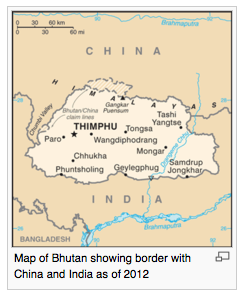
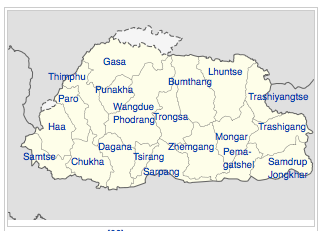
Sufficiently scaled back, our new itinerary would take us only as far as Bumthang. Over 14 days, we would hit the festivals along the Paro-Bumthang route. The updated route was: Paro to Haa Valley to Thimphu (the capital city) to Punakha to Wangdue to Bumthang. From there, turn back to Punakha and then to Paro before flying to Bangkok for our connecting flight home.
But, before hitting the festival trails, we had to visit the famed Tiger’s Nest Monastary in Paro. To not see it would have been deeply criminal.


The hike to Tiger’s Nest was not a difficult hike — but, it was a long hike up. There was only 1 way up (hike) and 2 ways down (hike or mule). The mules bring up supplies and they are only used to bring down injured tourists. Our local guide mentioned that one hardcore endurance hiker once managed to do the hike up in 45 minutes. But, for most people, 2-3 hours is the norm. On the day we went up the path, it was muddy by the morning rain and as the mules shared the same path as us, the trail was ripped up by the hooves. Fortunately, we were prepared and had walking sticks with us. These were useful to go up, but moreso for heading down as the path was steep and slippery from the mud (and mule dung)!
( CAVEAT to animal lovers: mules are work animals in Bhutan. They are not accustomed to being touched/petted. As such, they will kick. )
Bhutan is such an incredible country that I think pictures will do this country far better justice than my words. As such, I encourage you to view the picture diary which is available using the image link below. For the remainder of this blog, I will instead concentrate on lasting memories of the country and on sharing some tips to anyone planning a trip to Bhutan.

Fire Festival video– it is said that running underneath the burning arches will erase one’s sin (from the previous year). Nonetheless, some of these boys felt compelled to run under the arches multiple times! (Note: external link to Facebook)
MEMORIES of BHUTAN:
- AMAZING festivals. And what makes these festivals even more special is that these festivals are for the locals and not for the tourists. We were there to witness the Bhutanese celebrate and enjoy THEIR festivals. There were no “Disney” moments.
- Rowdy and boisterous boys at the fire festival.
- Big surprise of the trip: India has a big military presence in Bhutan. Presumably, this is to insure that Bhutan doesn’t get annexed by China (like Tibet).
- Mushroom soup, mushroom soup, mushroom soup, mushroon soup! Whilst perfectly edible and at first quite delicious, we had mushroom soup as a starter almost every night for 14 days. It looked like the hotels and tourist restaurants follow the government’s advice on how to feed the Westerners to the letter!
- “We have no more chicken” – waiter at a top restaurant in the capital city of Bhutan. But, chicken was featured in 2/3 of the menu!
- Bryan Adam’s “Summer of ’69” — song was very popular in 2008!
- Animals everywhere — cows, yaks, dogs, monkeys, etc. on the streets and even the highways. Dogs sleeping in the middle of a busy road. Bhutanese are Buddhists and therefore will avoid harming animals if possible. As such, dogs have no fear of cars.
- Non-stop canine opera nightly and constantly! (I love, love, love dogs …. but, not on this trip!)

Punaka Dzong
TIPS:
- start planning the itinerary early as the better hotels are quickly booked;
- make your appointed travel company ‘work for you’ and get their feedback about timing, duration, distance, etc.;
- flights to/from Bhutan are severely limited so in order to get the travel dates you want, pay for this trip as soon as you can to guarantee your seat (!);
- have robust travel insurance as flights are often cancelled/delayed if there is fog or poor weather (Paro Airport is a ‘sights only’ airport — in other words, pilots can only land the planes if there is good visibility) and and give yourself enough time to make your connecting flight;
- bring walking sticks (or 2) if you are visiting Tiger’s Nest;
- bring ear plugs, otherwise, you will suffer from non-stop canine opera at night;
- bring flashlights to see the ubiquitous drainage holes and broken cobblestones;
- avoid food that have been sitting around too long — I foolishly ate some buffet food that didn’t look too good (should have trusted my instincts and overruled my stomach) and regretted this decision for several days thereafter!
- If you like spicy food or want to try authentic Bhutanese food (i.e. not cooked to please the Western palate), then ask if it is possible to have the ‘driver’s food’. This is typically more varied and delicious.
- Sadly, the Wangdue Phodrang Dzong was completely destroyed by a fire in June 2012. It was a major historic and religious site. And, it was the place where we saw the Black Hat Monks dance (seeing it wipes away all sins!) as well as the colorful masked dancers. As such, please consult with your tour operator if you are heading to Bhutan solely for the festivals.
- have a flexible attitude — anything from landslides to ‘yak block’ can cause delays.

“Yak Block” … yaks stopping traffic!

Prayer flags in fog
- Our tour company was Yu-Druk Tours based in Thimphu. We selected this company based on the Lonely Planet’s recommendation — it is reputed to be large enough to handle overseas queries but is small enough that the owners pay personal attention to the itinerary. Although we really liked our tour guide (Tshering) and driver (Pimba) and would recommend them unreservedly, we would not recommend Yu-Druk. While there are no red-flags with them, we cannot help but be disappointed that they didn’t advise us at the outset that our original itinerary was overly ambitious. Furthermore, the goal of this trip was to see the local festivals, but, Yu-Druk head office got some of the festival dates wrong! Fortunately, as we had our own car, driver and guide, we were able to make changes to our schedule and thus were able to shift the logistics around by ourselves.
- If you can, try to get recommendations or client testimonials before selecting your tour operator. However, if you can’t then don’t be alarmed — according to The Lonely Planet: “all operators in Bhutan are subject to government regulations that specify services, standards and rates. You are quite safe no matter which company you choose, though the large companies do have more clout to obtain reservations in hotels and on Druk Air.”
Appendix:
- Hotel standards varied greatly and as such the ones that we liked were: Janka Resort (Para) and YT Hotel (in Lobesa – near Punakha/Wangdue). The one that had the electrical wires near the shower was Damchenlodge (Punakha).
- Our other travel blogs are available at: https://le-mckernan.com/?page_id=2012
- The full url for the online article “Now Might Be Time for the Brace Position! The Himalayan Airport So Dangerous ….” is at: http://www.dailymail.co.uk/news/article-2079836/The-Himalayan-airport-dangerous-pilots-qualified-land-there.html



